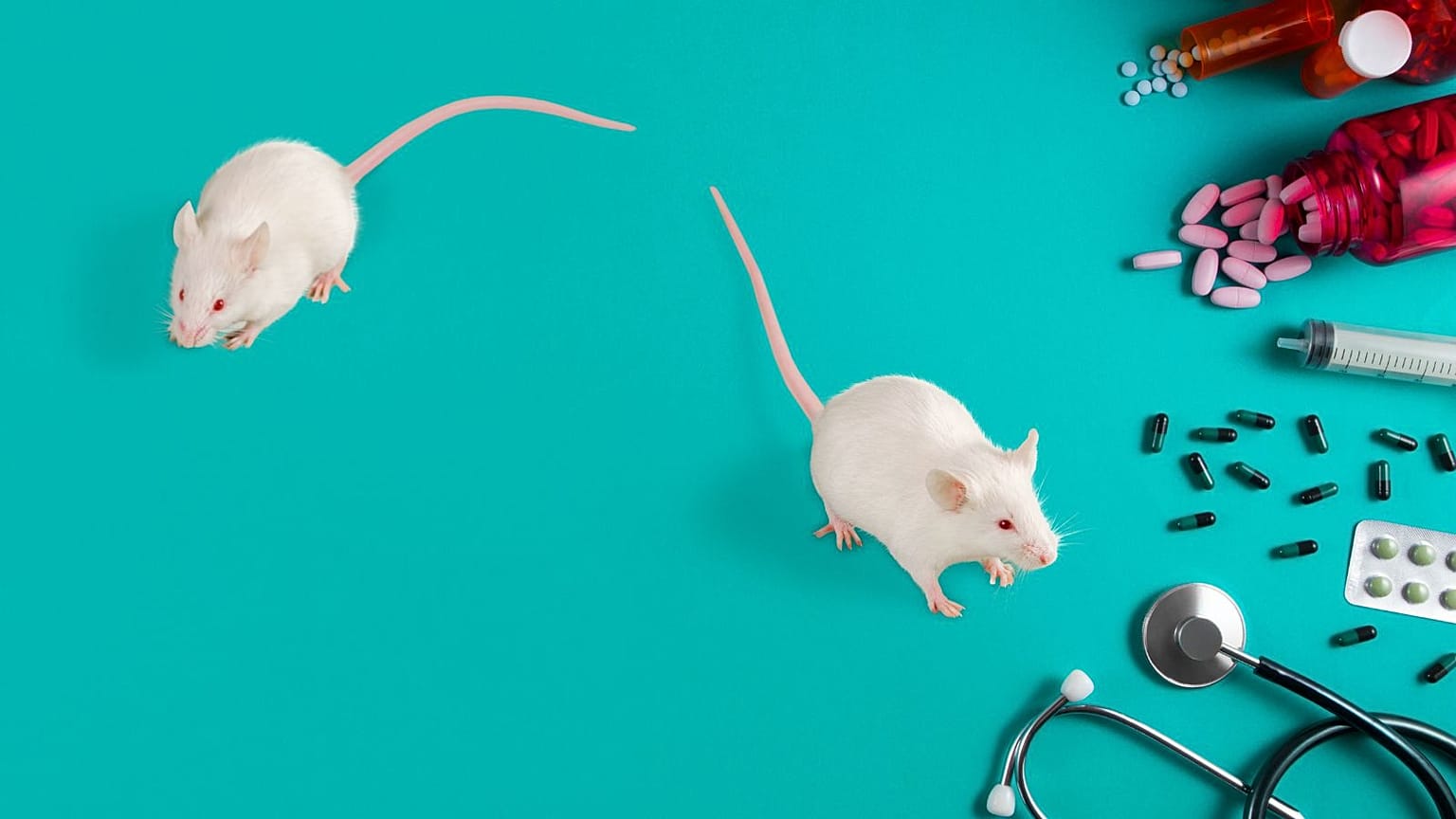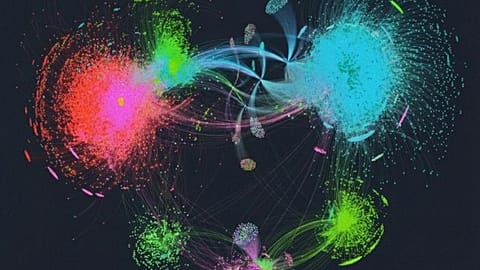Some people may find the idea of "mice catalogues" horrifying, but genetically modified animal models have dramatically contributed to medical progress.
The next time you take medicine, spare a thought for the lab mice that helped bring it to market - like countless other cures.
The use of mice in biomedical research has been widespread for over a century, becoming so fundamental to investigations that the industry has come up with actual catalogues of mouse models for scientists to order from.
“We have about 13,000 different mice that we are able to send to researchers. And it's a catalogue, you go online and you can read all about each one of these mice,” said Dr Nadia Rosenthal, a scientific director and professor at the Jackson Laboratory for Mammalian Genetics, home to one of the biggest mouse catalogues on the planet .
Some people may find the idea of "click-and-collect mice" mind-boggling, but to Rosenthal, what’s staggering is the amount of scientific progress she has seen in her lifetime thanks to them.
“Ninety per cent of what we know about biology or 80 per cent is related to working with animals,” said Dr Marc Dhenain, director of research at France’s National Centre for Scientific Research (CNRS).
“People who look at animal experimentation from a distance, I think, have a hard time realising the level of complexity that can be achieved in understanding fine biological mechanisms through genetic modifications in mice,” he told Euronews Next.
Why do scientists need GM mice?
Mice and humans share over 85 per cent of their genes. Certain mice species even develop human diseases; type 1 diabetes and cancer being some examples. And when they don’t, their genome can be genetically modified.
To study human disease and biology, scientists work with “humanised” mouse models, which are mice that have been genetically modified to carry human genes or cells.
For example, during the coronavirus pandemic, researchers engineered a breed of mice that could express the human version of a protein called ACE2 so that the rodents could be infected with SARS-CoV-2.
“We can play, we can modify the genome at will in the mouse, study gene functions, and test hypotheses,” said Dr Xavier Montagutelli, who has been co-director of the Institut Pasteur Mouse Genetics course since 1995.
Then they evaluate: what happens if we overexpress a given gene? What happens if it produces more of a protein?
Genetically modified mice are the ideal laboratory subject because they allow scientists to focus on a single genetic change - or several in some cases - and see how it affects the mice's health or behaviour, without worrying about other variables that might influence the results.
“Inbred strains in mice, which are genetically homogeneous populations, provide a lot of power for testing for experimental purposes. Much more powerful than if you did this study in humans directly,” said Montagutelli.
C57BL/6J: the favourite mouse model
In mice catalogues, researchers can learn everything that has been done to characterise specific breeds, from the molecular and genetic level, to even the physiological level. “We call it phenotyping,” Rosenthal explained.
Scientists then select and order their mice based on the mutation that is relevant to their research - for example, a gene or alteration in the DNA causing disease in humans that they are trying to understand.
There is one mouse species that scientists especially like: C57BL/6J, the first mouse strain to have had its genome fully sequenced.
“It has become almost like a household mouse for researchers,” Rosenthal said.
C57BL/6J is fully inbred, allowing researchers to effectively get the same mouse every time they experiment. “If you order a mouse from Jackson laboratory today, it will be genetically the same as a mouse in 1985,” she explained.
But why mice, and not other species genetically closer to humans?
“There are so many different genes that can be modified in mice that will never be possible to modify in primates,” explained Dhenain, who’s a specialist in brain ageing and Alzheimer's disease.
There are also some “practical considerations,” said Montagutelli. Because mice are small, carry multiple embryos and gestate in about three weeks - whereas primates usually carry one embryo for several months - they can easily be bred in large numbers for lab experiments.
Scientists also want to reduce as much as possible the use of primates in research “for obvious moral reasons,” and must follow regulation, which generally states that experimenting with primates should be avoided by all possible means, except for very threatening and lethal human infectious diseases.
From those basic rules, scientists use the model that's most appropriate for their research purposes: “It can be flies, it can zebrafish, it can be worms,” Montagutelli said, but it just so happens to very often be mice.
“Mice have been used for about 120 years and a lot of knowledge has been accumulated on their genetics, physiology and biochemistry,” he added.
What is the future of lab mice?
The prospect of manipulating the mouse genome with increasing precision has raised expectations of a multitude of groundbreaking discoveries.
Interrogating biological mechanisms in a variety of genetic backgrounds “has already proven to be very, very helpful,” said Montagutelli. “The fine regulation of gene functioning - which we are still far from fully understanding - is also exciting”.
The number of mouse strains today is “as genetically diverse as human populations from different countries in different parts of the world,” he added.
Rosenthal said people in the field were beginning to realise how important it is to make lab mice “as diverse as the humans that we're trying to treat”.
“If the mice are all the same, they're going to have the same results, but it may not be the results that are relevant to a patient,” she explained.
But some scientists argue that new cell-based approaches could remove the need for animal slaughter and genetically engineered lab mice.
Dr Stephen G. Gray, a bioengineer with a background in creating cell-based foods and cell-based therapies, believes many emerging technologies, notably synthetic biology, will likely eclipse mice and other types of animal testing in the near future.
“If human tissue biomanufacturing [the process of creating human tissues in a laboratory] for example, gets to the right price point and becomes more scalable, it will greatly impact the reduction of animal testing,” he told Euronews Next.
Organoids - tiny, self-organised three-dimensional tissue cultures that are derived from stem cells - could also “help us get valuable insights into a lot of different things,” he said, “at least for drug discovery, drug development and cell culture; I know there are limitations for medical devices”.
Rosenthal shares Gray's perspective that human cells could unlock a wealth of valuable insights, “unlike these mice that are so far removed from anything that's realistic in terms of the human community or a population”.
But the problem, she added, is that when you have so many variations in the cells coming from genetically diverse people, “there is no way of testing a hypothesis, whereas when you have an animal model, you can standardise things and test them”.
Dhenain also emphasises that lab mice “don’t have a miserable life”.
There is a strong control to make sure that animals involved in experiments are not suffering, he said, “including protocols to prevent suffering, from painkillers to stopping experiments that induce suffering before the occurrence of pain”.
“We spend a lot of time thinking about how to make a mouse feel safe and happy, because otherwise, they are not good models. I mean, it's obvious you don't want a mouse that's sick or distressed or stressed,“ Rosenthal said.
Humans have been domesticating animals for a very long time, and mice are just one of the animals that have been selected, in this case not for food, but for research, say the scientists, who admit to having routinely developed feelings for their lab mice.
“I'm an absolute mouse fan,” said Rosenthal. “I adore them. I think they're incredible animals, and they're so much more complicated and nuanced than anybody would think”.


















